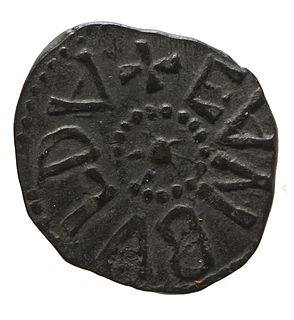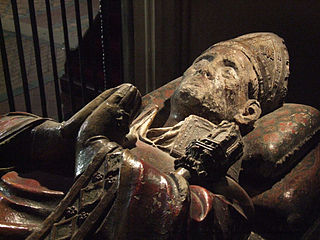Related Research Articles

John Alcock was an English churchman, bishop and Lord Chancellor.
Æthelgar was Archbishop of Canterbury, and previously Bishop of Selsey.
Eanbald was an eighth century Archbishop of York.

Eanbald was an eighth century Archbishop of York and correspondent of Alcuin.

Wulfhere was Archbishop of York between 854 and 900.
Eardulf of Lindisfarne was Bishop of Lindisfarne for 46 years between 854, following the death of his predecessor, and his own death in 899. He was chiefly responsible for removing the remains of St Cuthbert from Lindisfarne to protect them from Viking invasions, eventually resettling them in Chester-le-Street and temporarily running the see from there.

The Bishop of Rochester is the ordinary of the Church of England's Diocese of Rochester in the Province of Canterbury.

John Sheppey was an English administrator and bishop. He served as treasurer from 1356 to 1360. Little is known of his family and background. A Benedictine, he was ordained deacon in 1318, and later studied at Oxford. Later he became involved in royal government, and was made bishop of Rochester on 22 October 1352. He was consecrated on 10 March 1353. He died on 19 October 1360, and was buried in Rochester Cathedral at the altar of St John the Baptist. As his will shows, he was a friend of his predecessor in the treasury, William Edington.
Ithamar was the first bishop in England to be Saxon-born rather than consecrated by the Irish or from among Augustine's Roman missionaries. He was also the first Saxon bishop of Rochester.
Putta was a medieval Bishop of Rochester and probably the first Bishop of Hereford. Some modern historians say that the two Puttas were separate individuals.
Eardwulf was a medieval Bishop of Dunwich.
Ealdbeorht may have been a medieval Bishop of Dunwich.
Diora was a medieval Bishop of Rochester.
Waermund was a medieval Bishop of Rochester.
Siward was a medieval Bishop of Rochester.

John was a medieval Bishop of Rochester.
John II was a medieval Bishop of Rochester, England.
Gilbert Glanvill or Gilbert de Glanville was a medieval Bishop of Rochester.
Benedict of Sausetun was a medieval Bishop of Rochester.
Richard Young was a medieval Bishop of Bangor and Bishop of Rochester.
References
- Fryde, E. B.; Greenway, D. E.; Porter, S.; Roy, I. (1996). Handbook of British Chronology (Third revised ed.). Cambridge: Cambridge University Press. ISBN 0-521-56350-X.
- Smith, R. A. L. (1945). "The Early Community of St. Andrew at Rochester, 604-c. 1080". The English Historical Review . 60 (238): 289–299. doi:10.1093/ehr/LX.CCXXXVIII.289.